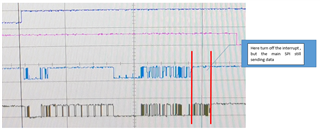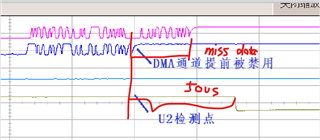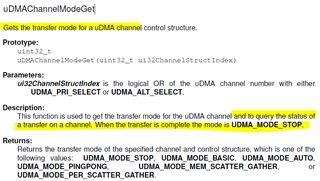Hi Team:
My customer using TM4C1231E6PZ, and we have a question would like to ask. The TM4C1231E6PZ chip uses SPI communication and is used as a slave.
How to judge that the host has completed sending data? Sent via DMA between master and slave.
Can it be determined using the functions uDMAChannelIsEnabled(MASTER_SSI_UDMA_RX_CHANNEL) and SSIBusy(MASTER_SSI_BASE)?
because we found the following issues:
The program code is as follows:
tem1 = (_Bool)((uDMAChannelIsEnabled(MASTER_SSI_UDMA_RX_CHANNEL))||(uDMAChannelIsEnabled(MASTER_SSI_UDMA_TX_CHANNEL)))
if((tem1 == (_Bool)false) )
{
uDMADisable();
……………………
}
It was found that the main SPI was still sending data, but the " if “ was true and the slave SPI turned off the interrupt.
As shown below, please help confirm whether there is a problem with customer`s program configuration? Please provide reference configuration. tks ~

for more details:




